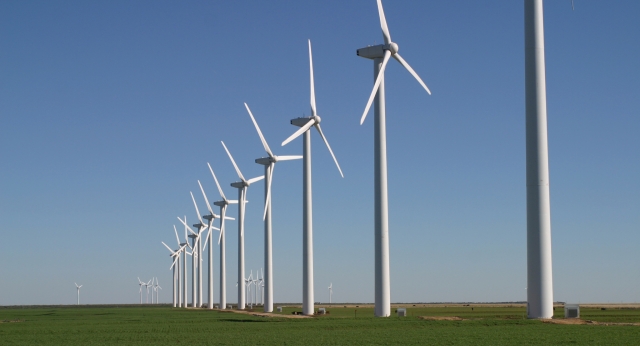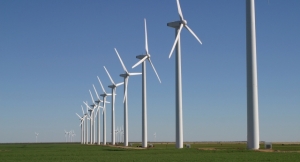Dechert OnPoint: New IEA Publication on Georgian Energy Policy
Dechert Georgia, through the contribution of partners Archil Giorgadze and Nicola Mariani, joined by senior associates Ruslan Akhalaia and Irakli Sokolovski, as well as Ana Kostava and Ana Kochiashvili, is partnering with Georgia Today on a regular section of the paper which will provide updated information regarding significant legal changes and developments in Georgia. In particular, we will highlight significant issues which may impact businesses operating in Georgia.
Dechert’s Tbilisi office combines local service and full corporate, tax and finance support with the global knowledge that comes with being part of a worldwide legal practice.
Dechert Georgia is the Tbilisi branch of Dechert LLP, an international Law firm that focuses on core transactional and litigation practices, providing world-class services to major corporations, financial institutions and private funds worldwide. With more than 900 Lawyers in our global practice groups working in 27 offices across Europe, the CIS, Asia, the Middle East and the United States, Dechert has the resources to deliver seamless, high quality legal services to clients worldwide. For more information, please visit www.dechert.com or contact Nicola Mariani at nicola.mariani@dechert.com.
New IEA publication on Georgian energy policy: an overview
The International Energy Agency (“IEA”) and Georgian Ministry of Energy (“MoE”) presented the Report on Energy Policies in Eastern Europe, Caucasus and Central Asia (“IEA Report”) in Tbilisi in April 2015. The IEA Report is the fruit of two years of research by IEA and the International energy co-operation program INOGATE, involving the European Union (EU), the littoral states of the Black and Caspian Seas and their neighbouring countries.
The publication was prepared as a component of IEA’s engagement with non-member countries and focuses on providing authoritative research and analysis on means of ensuring reliable, affordable and clean energy supplies for countries such as Armenia, Azerbaijan, Belarus, Georgia, Kazakhstan, Kyrgyzstan, Moldova, Tajikistan, Turkmenistan, Ukraine and Uzbekistan.
The IEA Report addresses the current Georgian energy policy in detail, including examination of key energy data regarding supply, generation, import and export, demand, intensity, renewables and data sources. It explores the current market structure of the Georgian energy sector as well as the institutional and legal framework and sets out energy security, market convergence and investment attraction specificities. Key policies and recommendations for Georgia covered in the IEA Report will be discussed in this week’s edition of OnPoint.
Institutional framework and existing energy policy
The IEA Report notes that the main energy policy strategy of the Government of Georgia (“GoG”) is long-term hydropower development dedicated to attracting foreign direct investment to reach self sufficiency in energy resources and expanding electricity export to neighbouring markets. The responsibility for implementation of this strategy is shared among three main governmental organs in the energy sector: the MoE, the Ministry of Environment and Natural Resources Protection (“MENR”) and the Georgian National Energy and Water Supply Regulatory Commission (“GNERC”).
The report notes that despite vast biomass, solar, wind and geothermal resources, the GoG has yet to fully assess and discover the economic potential of renewable energy development and elaborate a legal and regulatory framework with targeted measures and incentive schemes, such as feed-in tariffs.
According to the IEA Report, the documents outlining Georgia’s current energy policy as well as long-term priorities are the following:
Main Directions of State Policy in the Power Sector, adopted in 2006, is a guiding principle which outlines key policy directions such as reducing import dependency, expanding electricity export capacity and utilizing energy transit potential. Top priorities of this policy include development of the regional energy market, transportation of Caspian energy resources to EU markets and construction of new large HPPs and transmission lines.
Socio-Economic Development Strategy to 2020 is a strategy adopted on 6 June 2014. It outlines Georgia’s future energy development strategy up to 2020 and elaborates key priorities, focusing mainly on enhancing energy security and increasing self-sufficiency.
The State Programme for Renewable Energy adopted in 2008 is a programme focusing on attracting investors in the energy sector to build small to medium-sized HPPs by offering deregulated prices, the possibility of export without license for nine months out of the year, low taxes and streamlined bureaucracy. However, this programme also introduced the obligation on all new HPPs to sell 13 MW of electricity on the internal market during each annual winter period.
Georgia’s Energy Strategy to 2030 is a policy under discussion presented to the government for consultation in July 2014. The key proposals in the draft include: gradual approximation and harmonization of Georgia’s legislative and regulatory framework with the EU’s; diversification of supply sources and utilization of Georgia’s renewable energy sources; improvement of the energy market and the Electricity Trading Mechanism (“ETM”); strengthening Georgia’s importance as a transit route and the creation of a regional platform; adherence to environmental standards; and improved service quality and consumer protection.
Energy security
The IEA Report maps the energy security issues Georgia is facing, paying special attention to diversification of resources. Georgia is a net oil and gas importer and relies heavily on imports of natural gas, oil products, hard coal and biofuels in order to meet most of its day-to-day energy needs. The share of imports in Total Public Energy Suppy (“TPES”) increased from 47% in 2002 to 77% in 2013 in order to meet robust energy demand. The IEA Report states that Georgia imports roughly 88% of its natural gas and about 45% of its oil products from Azerbaijan, while diversifying its sources with imports from Russia.
The report notes that Georgia exports excess electricity and is interconnected with all four of its neighbouring countries, however the volumes of trade are minor and, considering the total annual potential capacity of 15,000 MW, only 12% of which is utilized, there is ample room for growth. 75% of Georgia’s current electricity production comes from HPPs, with the remaining 25% generated via natural gas combustion.
The IEA Report mentions that Georgia’s own energy resources, apart from hydropower, stem from: wind, with potential of 4 TWh per year; solar power, with potential evaluated at 108 MW per year; geothermal, amounting to 200-250 million cubic meters annually; crude oil viable reserves, estimated at 5 million tons in 2015 and with untapped resources of 50 Mt; natural gas reserves estimated at 8 bcm with 102 bcm resources; and hard coal reserves estimated at 201 Mt with 700 Mt of reserves.
The IEA Report states that the country lacks a declared strategy regarding emergency stock holdings and fuel replacement mechanisms in the event of energy supply disruptions. The government is considering developing minimal strategic gas reserves and has called for tenders for underground gas storage development to overcome recurring winter deficits estimated to reach approximately 200 mcm by 2030. It has proposed doing this by holding the summer surplus underground.
Energy sector investment climate
The IEA Report provides an extensive description of energy sector investments in Georgia. Total foreign direct investment in the energy sector amounted to USD923 million in 2014. The report states that Georgia has undertaken a number of profound institutional reforms aimed at improvement of its business climate: e.g., the number of activities subject to licensing was reduced to 159 from 909; the tax system was dramatically overhauled; the labour market underwent far-reaching reform; and tax-free zones were introduced. The report mentions Georgia’s World Bank ranking for ease of doing business, which, at No.15, is the highest among countries in the region. According to a separate report by Transparency International, which was also cited in the IEA Report, Georgia’s ranking on public sector corruption was also the best in the region.
The report outlines several key investment projects of strategic regional interest, which are already being implemented: a 500kV/400kV connection line to Turkey and a 400 kV electricity transmission line between Georgia and Armenia, along with 17 HPPs under construction by the end of 2014. The gas sector projects of strategic interest were also noted, including Caspian gas transportation and transit and developments allowing an additional 16bcm/y of transportation from Shah Deniz 2.
Conclusion and IEA recommendations
The IEA Report outlines Georgia’s progress over the past few years and sets out recommendations to ensure reliable, affordable and clean energy supplies.
The IEA Report mentions the importance of Georgia’s Energy Strategy for 2030 and notes that elaboration of such a strategy requires high-level government commitment and consultation with all energy stakeholders. According to IEA, the focus of the new energy policy should be maximizing renewable energy sources and energy efficiency gains while ensuring that supplies remain affordable and secure. It should also consider detailed implementation of the new Georgian Electricity Market Model 2015 (“GEMM 2015”) in order to bring Georgia more in line with the EU market and support the progressive development of the regional market. Based on the IEA Report, preparation of the necessary legal framework and implementation of the policy in a timely manner is as important as finalization of the policy itself.
Furthermore, the IEA Report urges Georgia to prepare legislative proposals regarding energy efficiency, as losses during the natural gas distribution process are high in comparison to European levels. Ageing infrastructure and industry sectors also contribute to efficiency losses. IEA notes that a long-term stable regulatory framework for the new electricity market model should be created in order to align these rules to those of the EU market while considering the regional context as well.
Finally, the IEA Report states that Georgia needs to strengthen the competences and independence of the national regulatory authority and reinforce its role in safeguarding consumer interests. Georgia also needs to explore the possibility of creating an analytical center to gather experienced national experts to develop functional policies and industry regulations.
***
Note: this article does not constitute legal advice. You are responsible for consulting with your own professional legal advisors concerning specific circumstances for your business.











